Designer Ryunosuke Okazaki Seams Science-Fiction with Mythology
The futuristic garments by the up-and-coming stylist dress the body with ancient spirits and philosophies of nature.
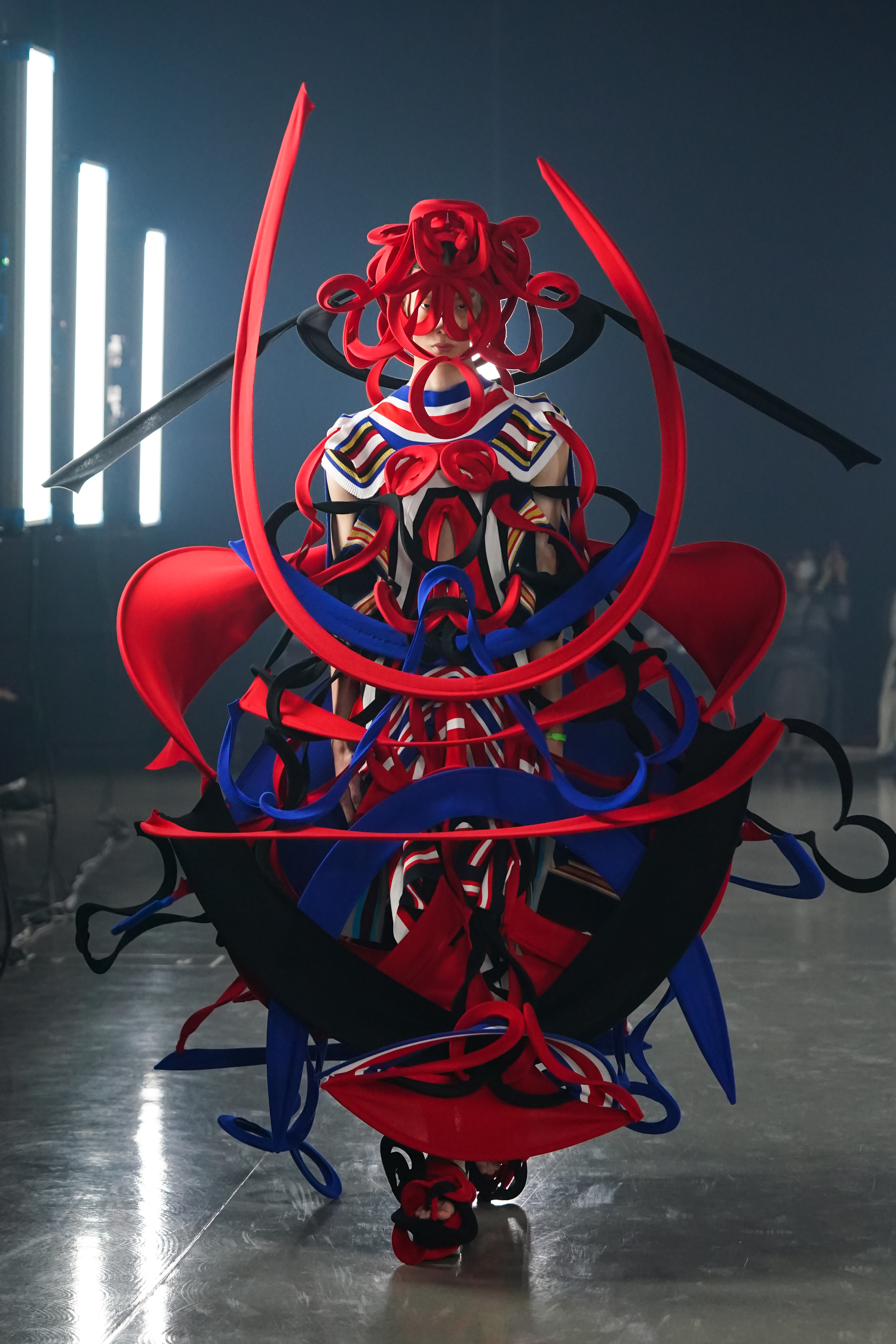
Courtesy of Ryunosuke Okazaki.
At first glance, designer Ryunosuke Okazaki’s runways suggest distant futures. His models are ornate in lustrous, surrealist silhouettes, and his dresses are technically impressive, expressing a forward-thinkingness in daring sculptural swirls.
But the forms in fact correspond to an archaic lineage, informed by the religious ornamentation of Jomon-era Japan (a prehistoric period between 4,000 and 300 BCE) and the chromatics of Shintoist symbolism. As his hallucinatory garments have gathered international attention, the Tokyo Fashion Week newcomer stole the limelight in his 2022 Spring Ready-to-Wear collection with its boundless movement erupting from material.
Wisdom in the Wardrobe
A finalist of the prestigious LVMH Prize 2022, Ryunosuke Okazaki’s background as a graphic designer—educated at Tokyo University of the Arts before arriving in the world of fashion—is apparent in his extraordinary use of line. Using polyester, cotton, and ribbed knits he draws stark, chiseled forms that mesmerize as they expand in petal-like flows. Their infinite spirals and protruding angles, referencing at once creeping vines or religious pottery of Japanese prehistory, animate bygone civilisations who existed amongst nature in inherent harmony. Meanwhile, their mind-bending optical effect is a nod to the influence of French surrealists, a reference extensively explored by Ryunosuke Okazaki, as their abstractions indicate uncontrollable thought or action. Their psychic dimensions gesture an openness towards chaos.
As much as his visions progress towards the future, a Hiroshima-native, Ryunosuke Okazaki imbues his couture with the spirit of collective memory. In the afterlife of historical catastrophe, their shapes ruminate on the psychic distortions brought about by modernity and redeem the severed coexistence of nature and culture. To BLANK magazine he explains, ‘Hiroshima, my hometown, suffered in the atomic bombings, losing its people and nature. Hundreds of paper cranes with prayers across the world have been sent to Hiroshima with the hopes of not repeating the same incident. The prayers elicit the intimacy between people and nature, the objects of worship.’ Sleek but poetic, his garments could be seen as a living philosophy—while their flares delve into the unconscious, the relationships between the human or the artificial, with the unfathomability of nature staged within an otherworldly geometry.
Ryunosuke Okazaki’s latest collections can be found on the designer’s website.

Courtesy of Ryunosuke Okazaki.
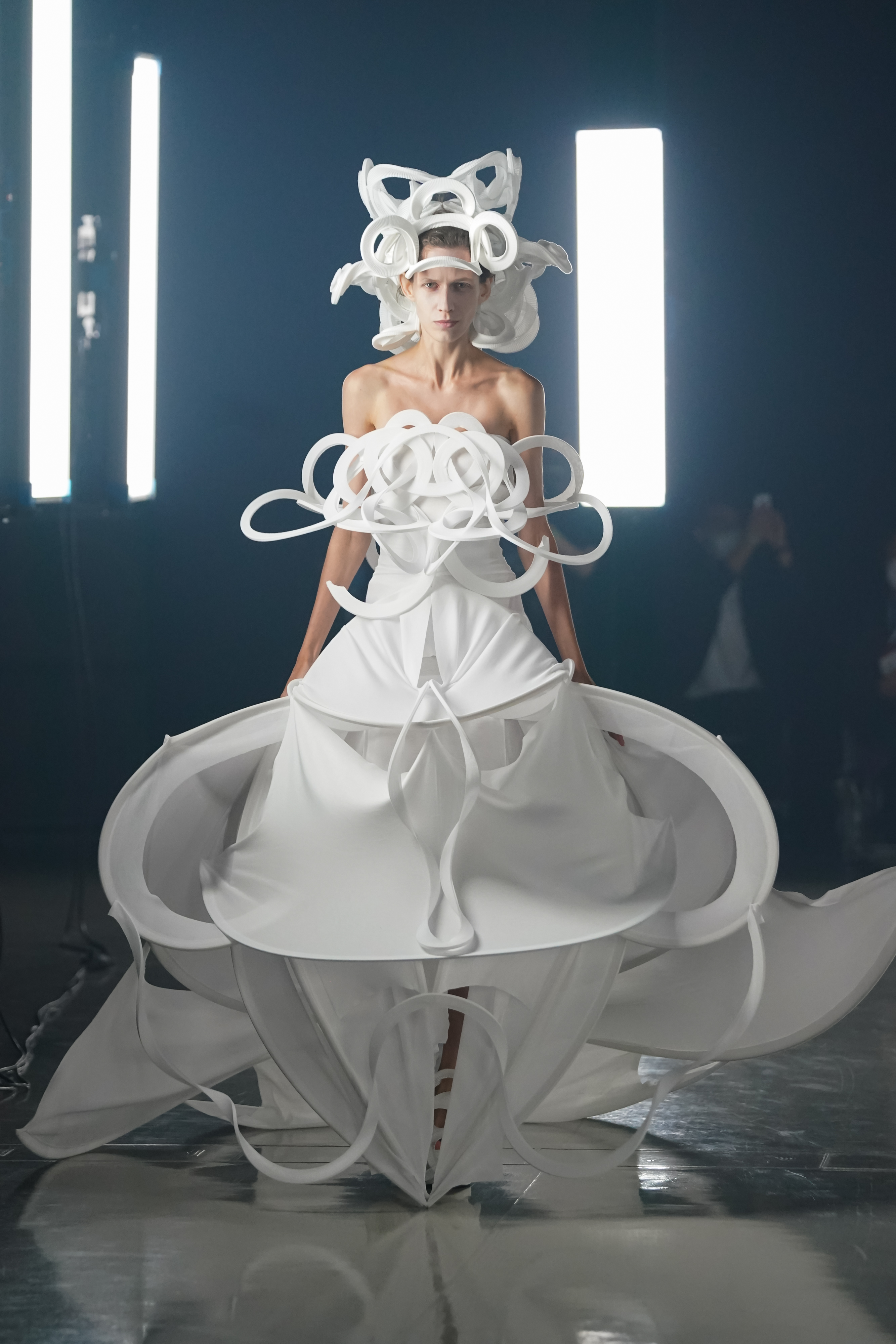
Courtesy of Ryunosuke Okazaki.
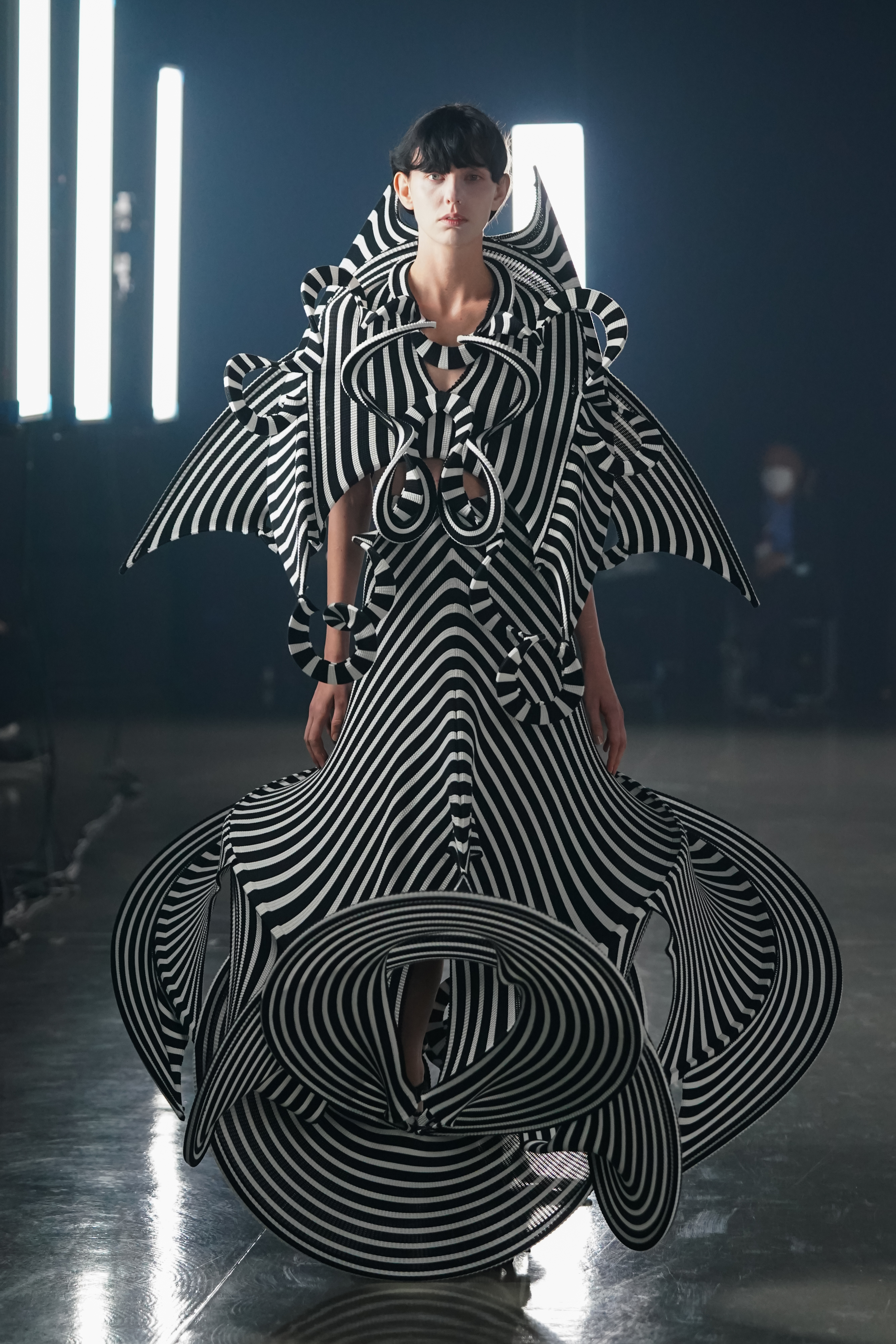
Courtesy of Ryunosuke Okazaki.
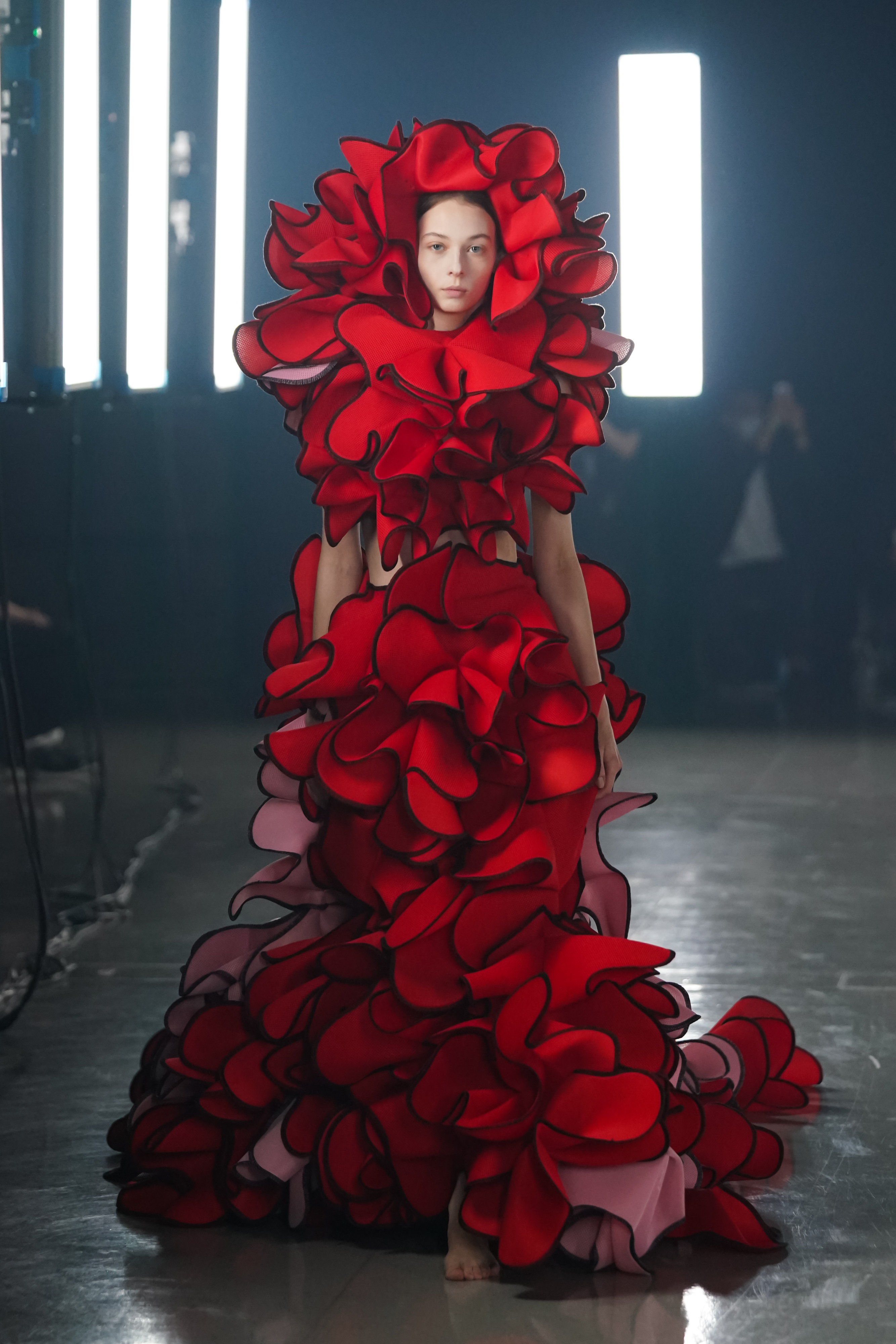
Courtesy of Ryunosuke Okazaki.
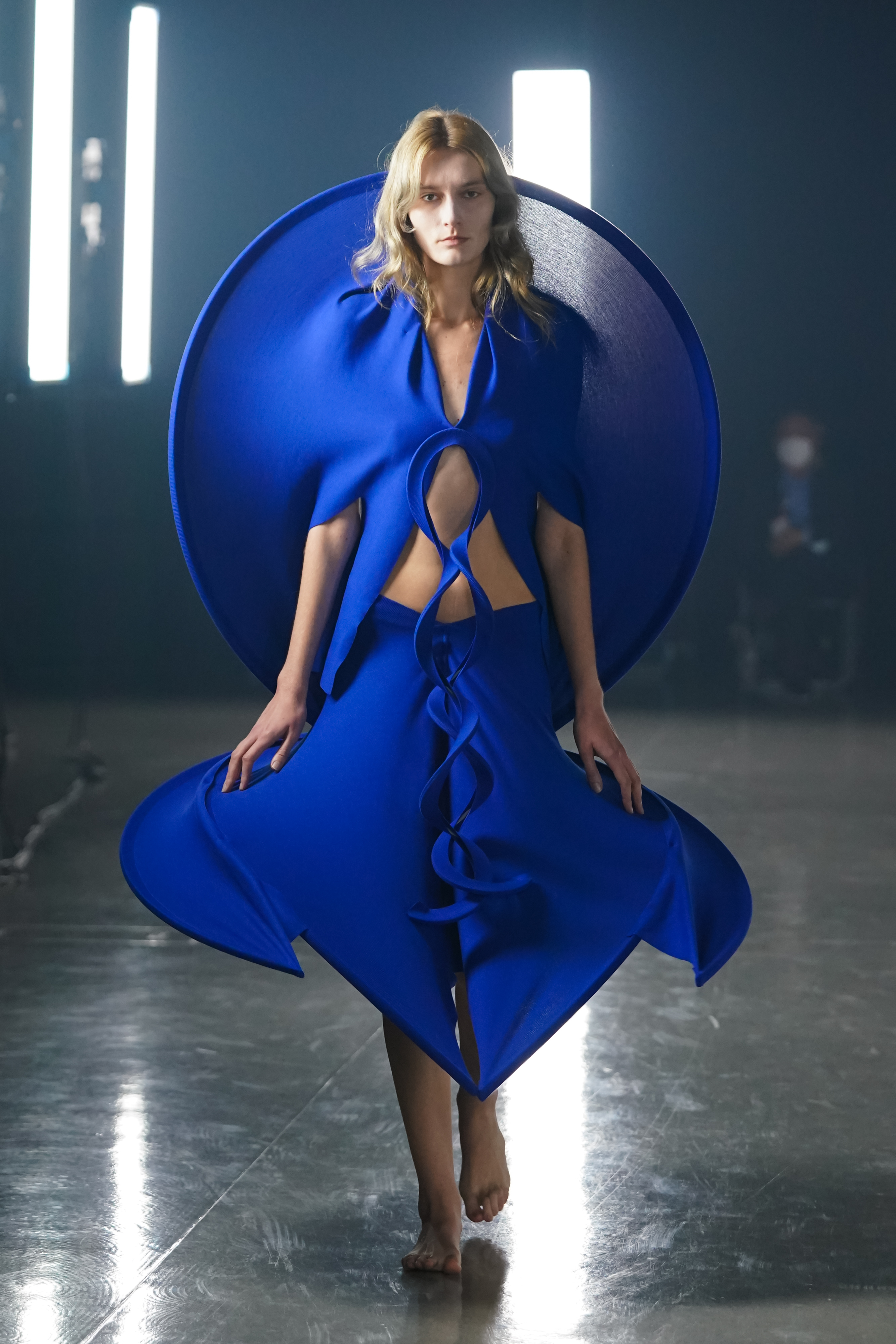
Courtesy of Ryunosuke Okazaki.

Courtesy of Ryunosuke Okazaki.
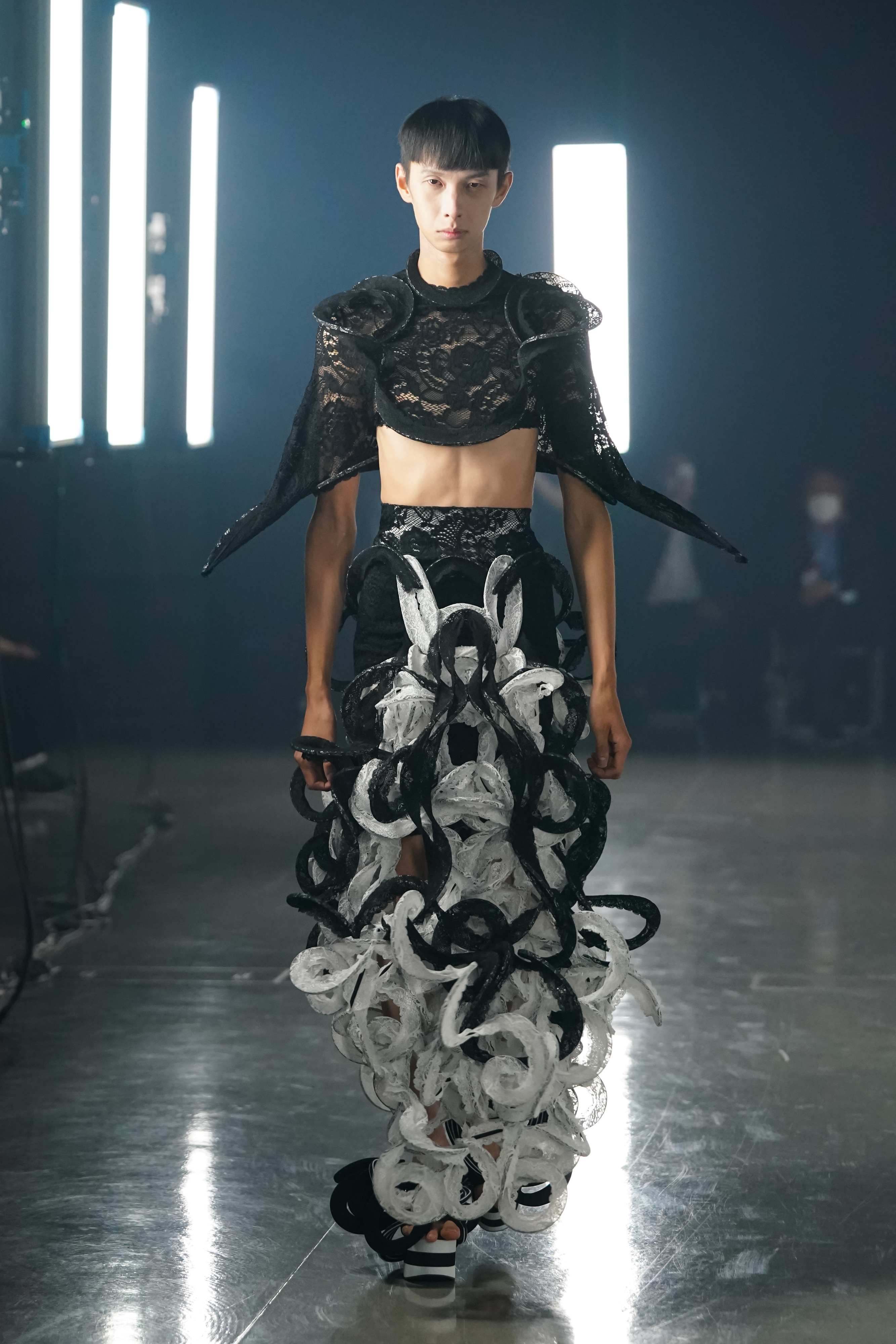
Courtesy of Ryunosuke Okazaki.
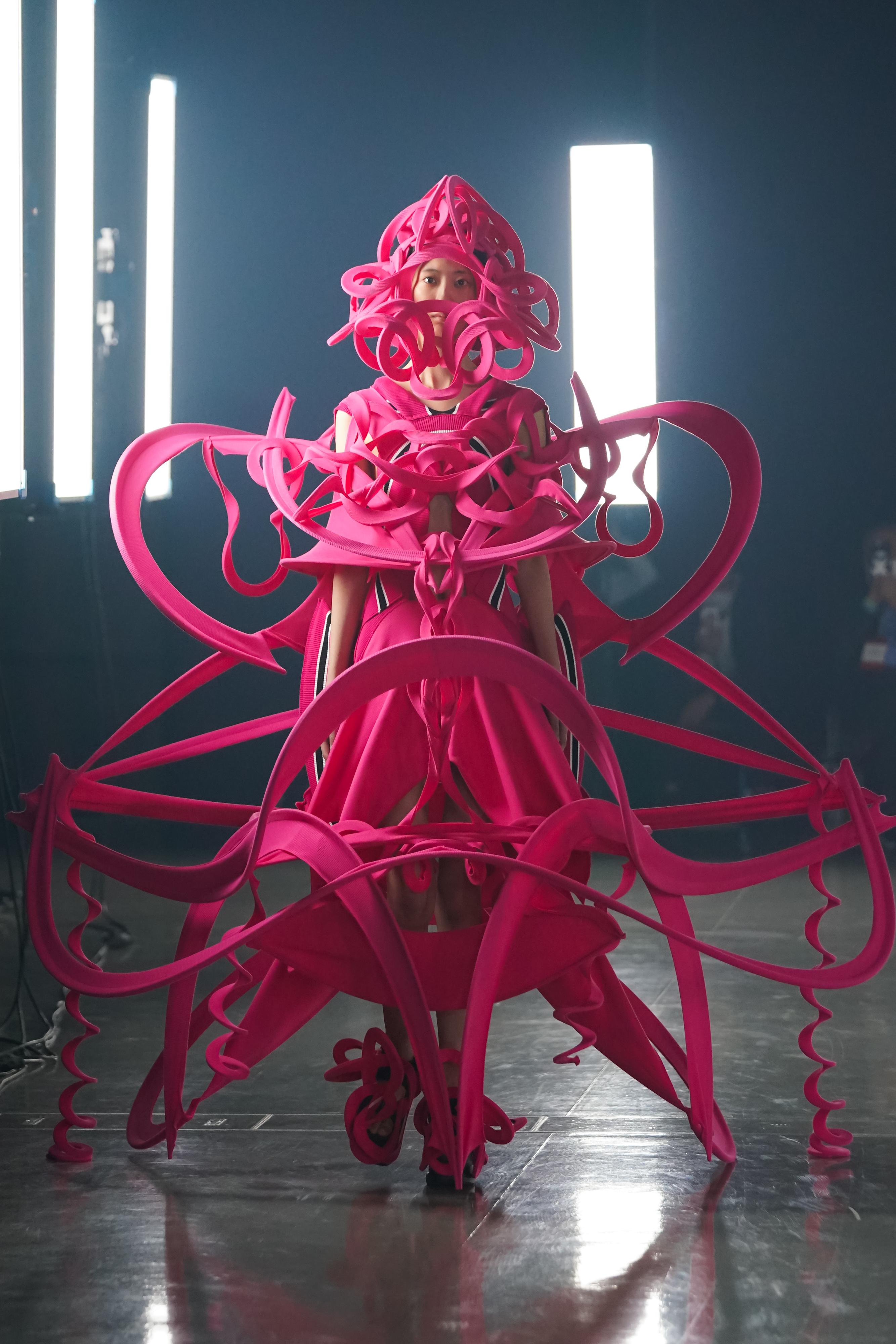
Courtesy of Ryunosuke Okazaki.

Courtesy of Ryunosuke Okazaki.
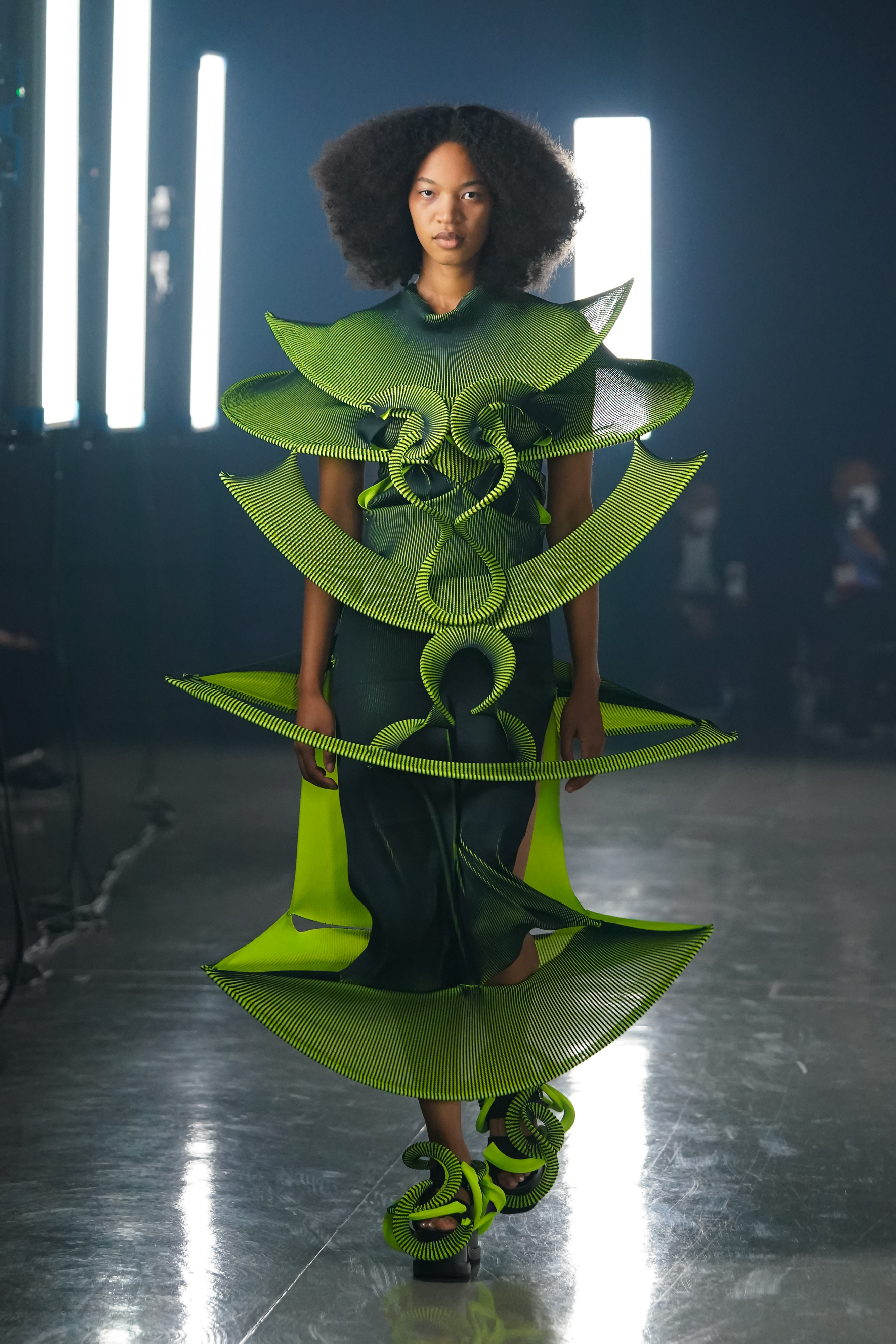
Courtesy of Ryunosuke Okazaki.
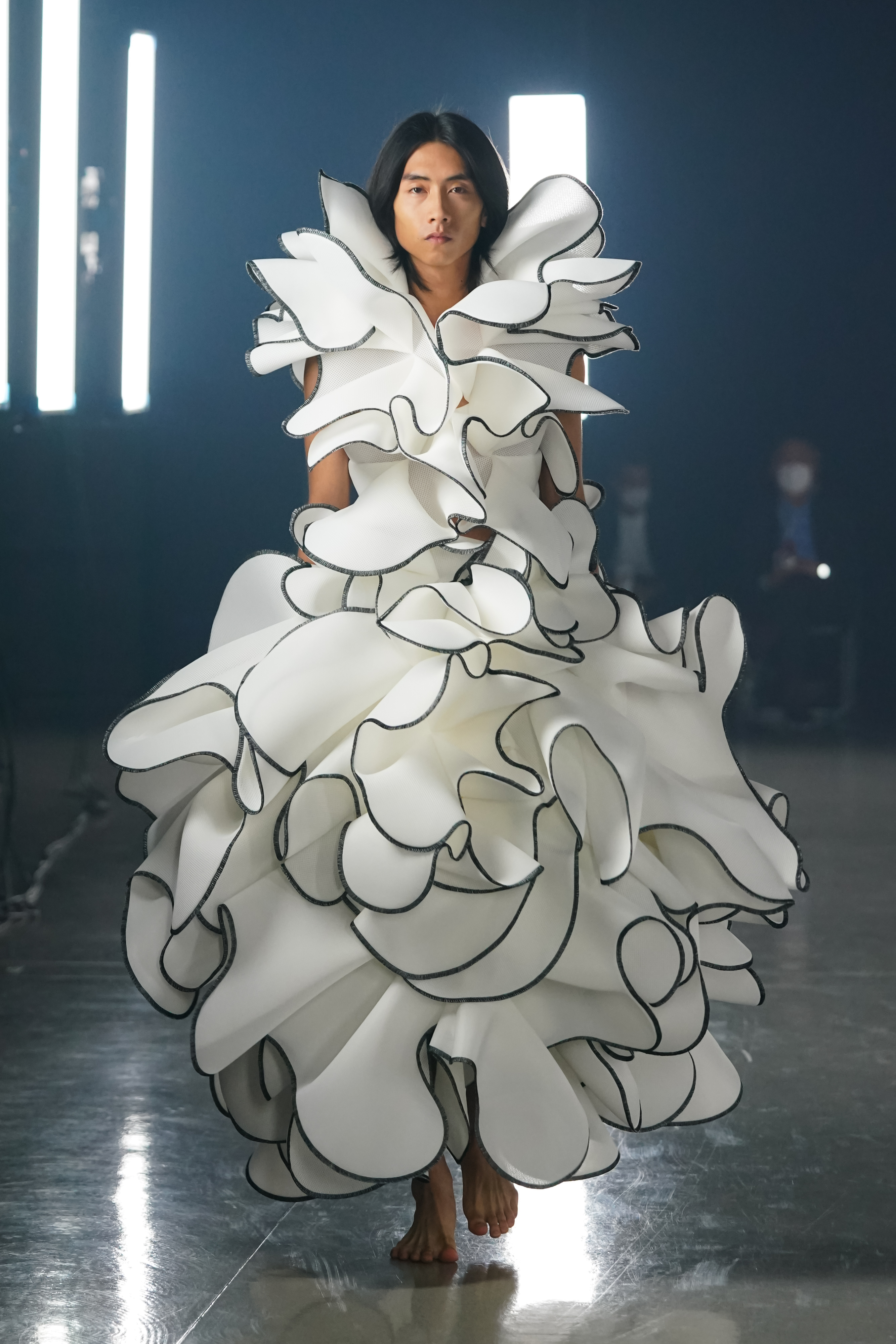
Courtesy of Ryunosuke Okazaki.
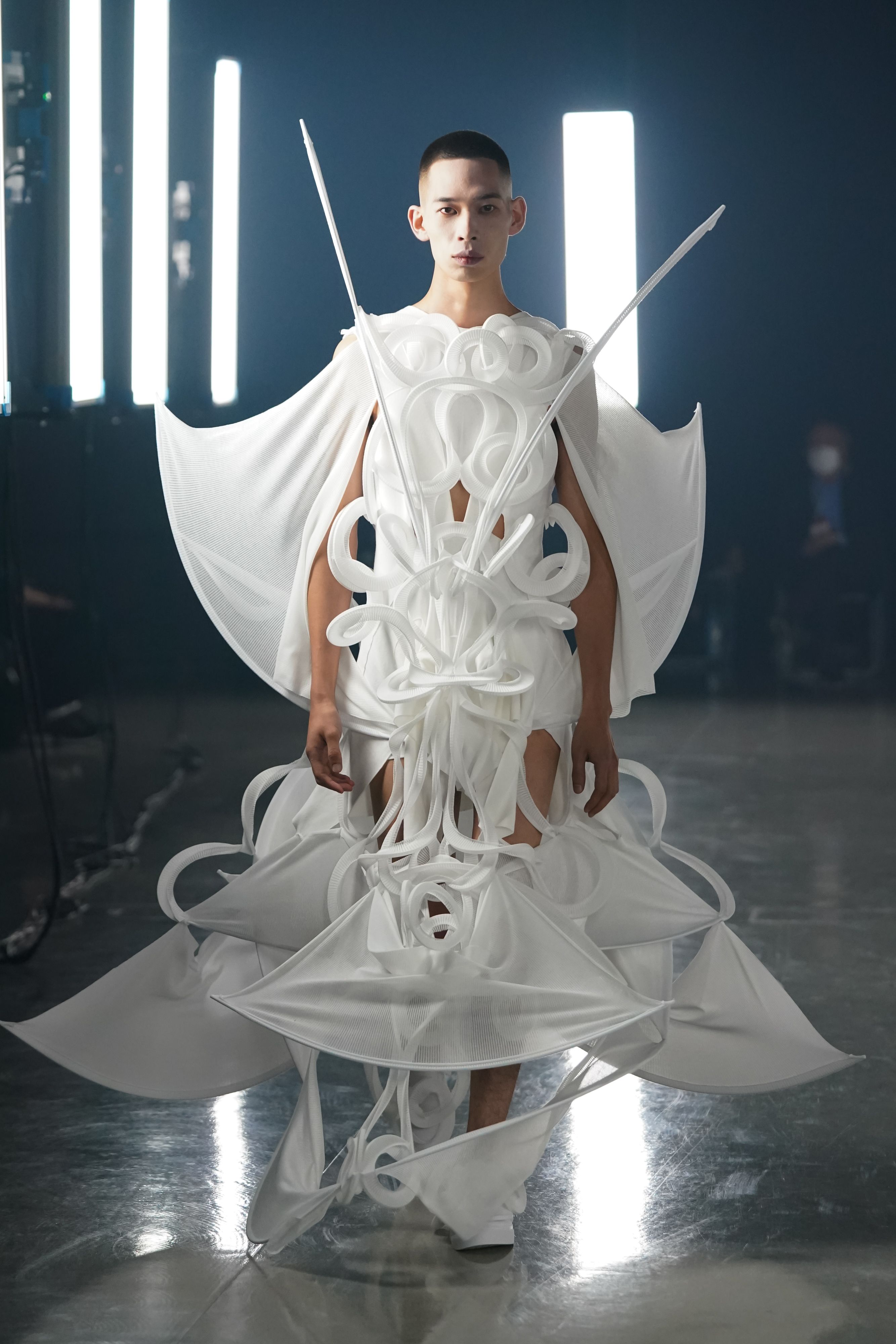
Courtesy of Ryunosuke Okazaki.
TRENDING
-
The Tattoos that Marked the Criminals of the Edo Period
Traditional tattoos were strong signifiers; murderers had head tattoos, while theft might result in an arm tattoo.

-
Paris, Tokyo: Robert Compagnon
With his co-chef and talented wife, Jessica Yang, Robert Compagnon opened one of the top new restaurants in Paris: Le Rigmarole.
 3:31
3:31 -
The Story of Sada Yacco, the Geisha who Bewitched Europe
Described by Dazed magazine as the first beauty influencer, she has been restored to her former glory since 2019.

-
Ito Jakuchu's Naturalist Paintings
From 15 September until 14 October 2018, the Petit Palais showcased the artist's iconic ‘Images of the Colourful Realm of Living Beings’.

-
Chiharu Shiota, Red Threads of the Soul
Last year, more than 660,000 people visited the retrospective 'Chiharu Shiota: The Soul Trembles' exhibit at the Mori Art Museum.





